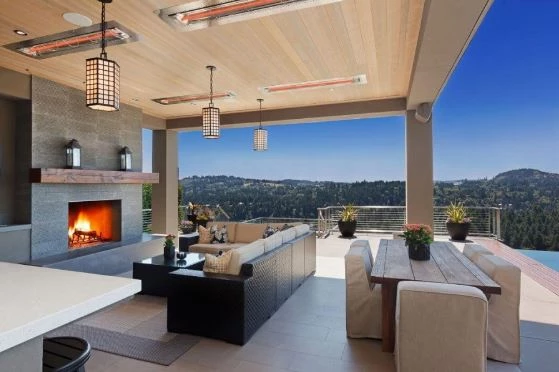Gas Heaters Buyer's Guide
-

- Infratech ceiling-mount recessed heater
It's not surprising that gas heaters are an increasingly popular choice. They are efficient, cost-effective, low maintenance, and have a huge selection when it comes to model options. Whether you're looking for supplemental heat, whole-home heating, or outdoor patio heater options, a natural gas or propane heater is a great solution.

